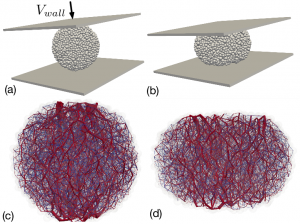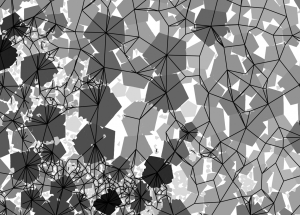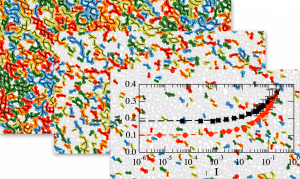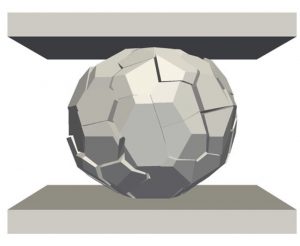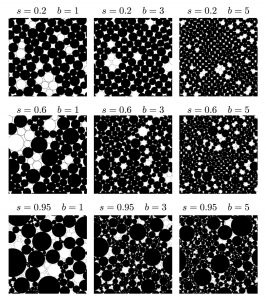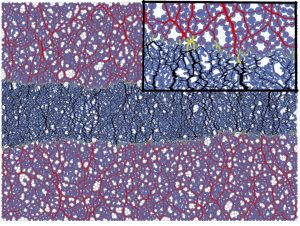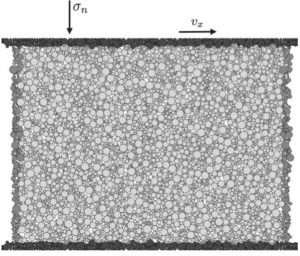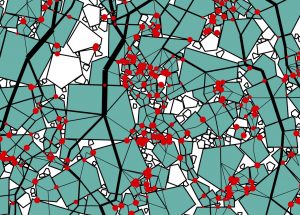Theechalit Binaree, Itthichai Preechawuttipong, and Emilien Azéma. PHYSICAL REVIEW E 100, 012904 (2019)
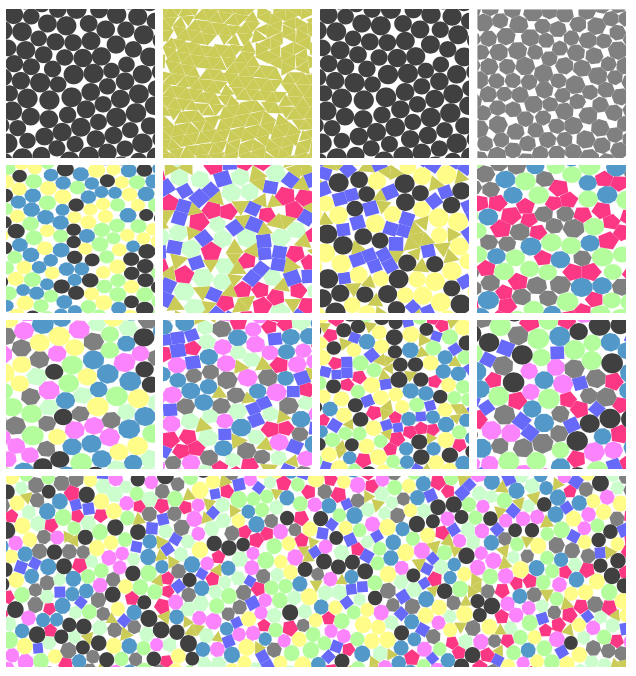
Using bi-dimensional discrete element simulations, the shear strength and microstructure of granular mixtures composed of particles of different shapes are systematically analyzed as a function of the proportion of grains of a given number of sides and the combination of different shapes (species) in one sample. We varied the angularity of the particles by varying the number of sides of the polygons from 3 (triangles) up to 20 (icosagons) and disks. The samples analyzed were built keeping in mind the following cases: (1) increase of angularity and species starting from disks; (2) decrease of angularity and increase of species starting from triangles; (3) random angularity and increase of species starting from disks and from polygons. The results show that the shear strength vary monotonically with increasing numbers of species (it may increase or decrease), even in the random mixtures (case 3). At the micro-scale, the variation in shear strength as a function of the number of species is due to different mechanisms depending on the cases analyzed. It may result from the increase of both the geometrical and force anisotropies, from only a decrease of frictional anisotropy, or from compensation mechanisms involving geometrical and force anisotropies.
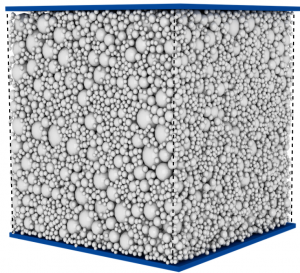 We use three-dimensional contact dynamics simulations to analyze the rheology of polydisperse packings of spherical particles subjected to simple shear. The macroscopic and microstructural properties of several packings are analyzed as a function of their size span (from nearly monodisperse to highly polydisperse). Consistently with previous two-dimensional simulations, we find that the shear strength is independent of the size span despite the increase of packing fraction with size polydispersity. At the grain scale, we analyze the particle connectivity, force transmission, and the corresponding anisotropies of the contact and force networks. We show that force distributions become increasingly broader as the size span increases. In particular, stronger forces are captured by large particles, which are also better connected creating the so-called granular backbone. Throughout this backbone friction mobilization is rare and compressive forces control the stability of such structure. In return, small particles create an important population of rattlers discarded of the strength and granular structure analysis. As a consequence, the contact anisotropy declines with size span, whereas the force and branch anisotropies increase. These microstructural compensations allow us to explain the independence of the shear strength from particle size polydispersity.
We use three-dimensional contact dynamics simulations to analyze the rheology of polydisperse packings of spherical particles subjected to simple shear. The macroscopic and microstructural properties of several packings are analyzed as a function of their size span (from nearly monodisperse to highly polydisperse). Consistently with previous two-dimensional simulations, we find that the shear strength is independent of the size span despite the increase of packing fraction with size polydispersity. At the grain scale, we analyze the particle connectivity, force transmission, and the corresponding anisotropies of the contact and force networks. We show that force distributions become increasingly broader as the size span increases. In particular, stronger forces are captured by large particles, which are also better connected creating the so-called granular backbone. Throughout this backbone friction mobilization is rare and compressive forces control the stability of such structure. In return, small particles create an important population of rattlers discarded of the strength and granular structure analysis. As a consequence, the contact anisotropy declines with size span, whereas the force and branch anisotropies increase. These microstructural compensations allow us to explain the independence of the shear strength from particle size polydispersity.